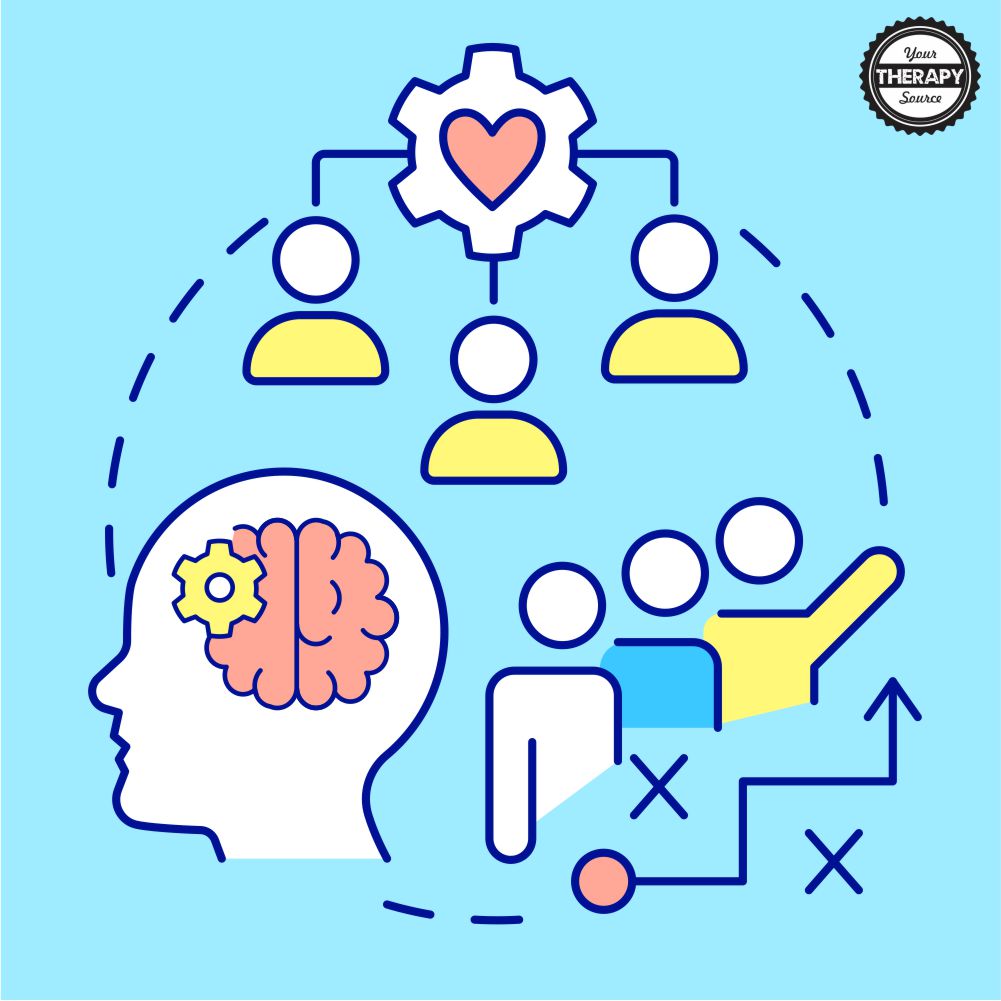Cognitive Flexibility Examples for Students
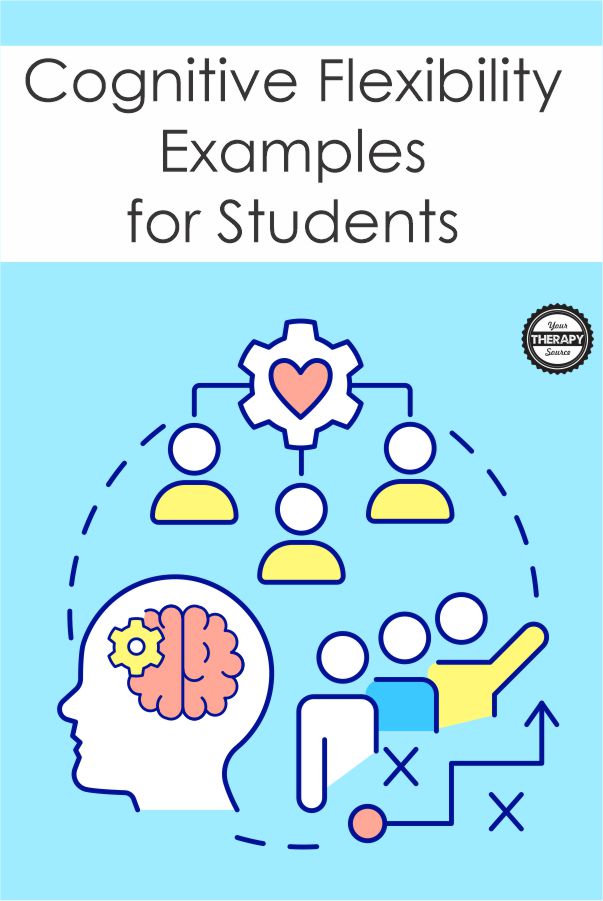
Cognitive flexibility examples for students are crucial in understanding how mental flexibility can be improved. Cognitive flexibility refers to adjusting and adapting to new situations, rules, and perspectives. It is an essential skill in today’s fast-paced world, where thinking on your feet and coming up with creative solutions is highly valued. Read more about different ways to improve cognitive flexibility and tips to help your students become more adaptable thinkers.
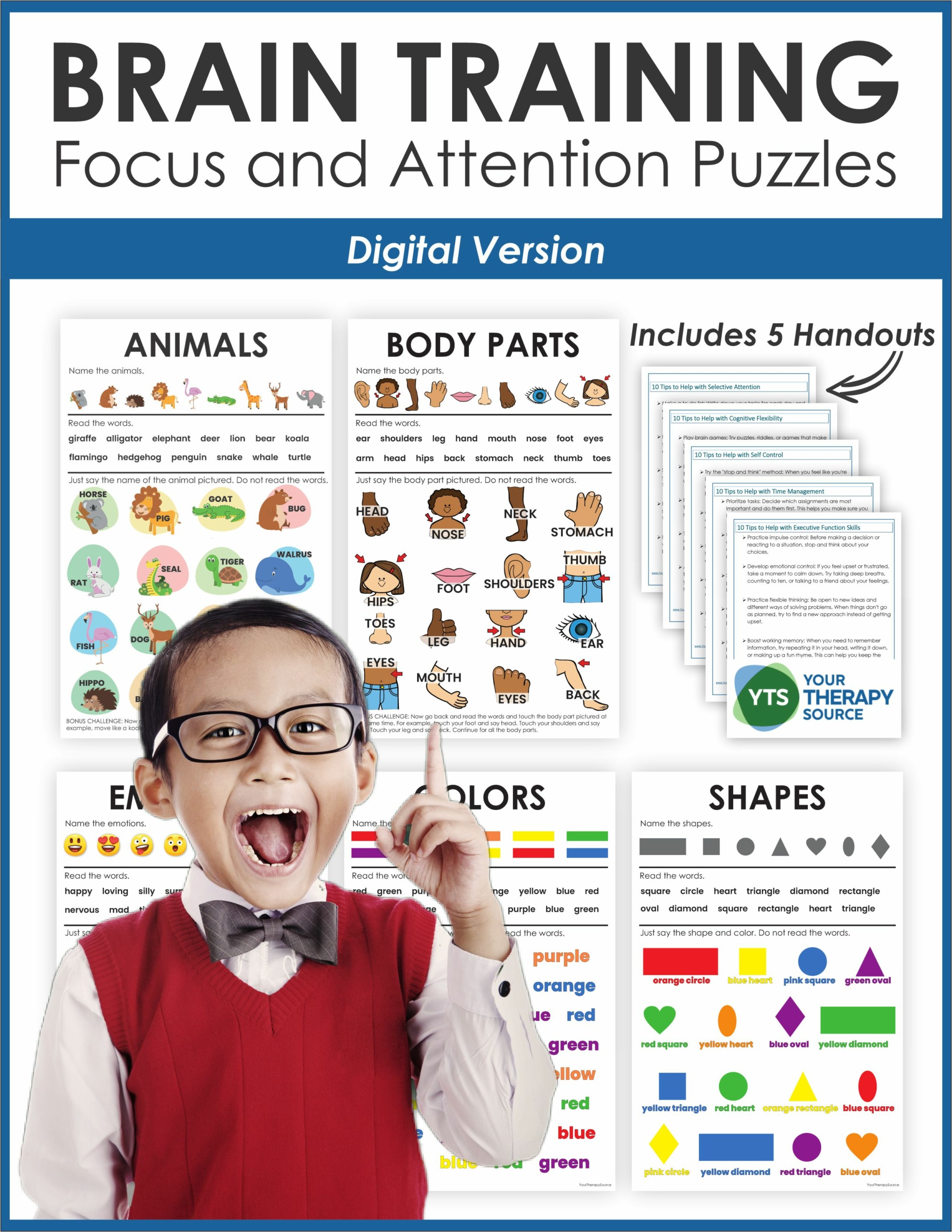
Brain Training Posters DIGITAL Version
COGNITIVE FLEXIBILITY EXAMPLES DURING THE SCHOOL YEARS
Cognitive flexibility is essential for students as they navigate various stages of their educational journey. From preschool to high school, students are frequently faced with new situations, challenges, and expectations that require adaptability and the ability to shift their thinking. Here are 20 examples of cognitive flexibility that are required of students in school, broken down by educational level.
Developing cognitive flexibility is crucial during early childhood for young children, as it lays the foundation for future learning and problem-solving abilities. Parents and educators can support young children’s cognitive flexibility development by providing a variety of learning experiences, encouraging creative thinking, and promoting a growth mindset.
Preschool Cognitive Flexibility Examples:
- Task switching from playing with blocks to participating in circle time
- Adapting to a new classroom routine or schedule change
- Transitioning from one activity to another, such as moving from outdoor play to indoor art time
- Accepting and following new rules introduced during a game or activity
- Learning to share toys and take turns with classmates during playtime
Elementary School Cognitive Flexibility Examples:
- Adapting to a new teacher or classroom environment after a grade promotion
- Moving between subjects in school, such as transitioning from math class to language arts
- Working on group projects with different classmates, requiring collaboration and understanding of diverse perspectives
- Solving a math problem using different strategies or methods
- Writing a story with a given set of words or within specific guidelines
Middle School Cognitive Flexibility Examples:
- Juggling multiple assignments and deadlines from various classes
- Participating in debates or discussions that require considering and understanding opposing viewpoints
- Adapting to new rules, expectations, or social dynamics as students transition to middle school
- Applying previously learned knowledge to new contexts or subjects, such as using math skills in science class
- Learning to use new technology, software, or digital tools for assignments and projects
High School Cognitive Flexibility Examples:
- Balancing academic work with extracurricular activities, social life, and part-time jobs
- Adapting writing styles to fit different types of assignments, such as essays, research papers, or creative writing projects
- Developing and adjusting study habits and strategies to prepare for different types of exams and assessments
- Navigating challenging social situations, such as conflicts, peer pressure, or new friendships
- Planning and adjusting schedules to accommodate class changes, exam periods, or other academic commitments
Cultivating cognitive flexibility is an ongoing process that helps students adapt and thrive in various educational settings. By recognizing and supporting the development of this essential skill, educators and parents can better prepare students to face the ever-changing challenges and expectations, they will encounter throughout their academic careers and beyond.
WHAT PART OF THE BRAIN IS RESPONSIBLE FOR A STUDENT’S LEVEL OF COGNITIVE FLEXIBILITY?
Cognitive flexibility is primarily associated with the prefrontal cortex, a region in the brain’s frontal lobes. The prefrontal cortex is responsible for various higher-order cognitive functions, including executive functions such as planning, decision-making, problem-solving, and adapting to new situations. In addition to the prefrontal cortex, other brain regions, such as the anterior cingulate cortex and the parietal cortex, also play a role in cognitive flexibility. These areas are involved in processes such as attention, conflict monitoring, and cognitive control, which are essential for adjusting to changes and switching between tasks or mental sets.
MENTAL FLEXIBILITY: THE FOUNDATION OF COGNITIVE FLEXIBILITY
Mental flexibility is the ability to change one’s thinking and behavior in response to new situations, challenges, or information. This skill is crucial for problem-solving, creativity, critical thinking, and managing daily life and adapting to sudden changes. Cognitive flexibility is a subset of mental flexibility that specifically refers to the brain’s ability to switch between different tasks, rules, and perspectives.
NEW SITUATIONS
Facing new situations is a great way to improve cognitive flexibility skills. When we encounter unfamiliar circumstances or challenges, our brains must quickly adapt and come up with new ways to solve problems or achieve goals. By exposing ourselves to novel experiences and environments, we can train our brains to be more adaptable and open-minded.
DIFFERENT ROUTES: A PATH TO COGNITIVE FLEXIBILITY
Trying different routes, both literally and figuratively, is one of the best ways to enhance cognitive flexibility. For example, taking a different route to school or work can help you adapt to new environments. Similarly, approaching problems or tasks using different strategies can improve your ability to think outside the box and find creative solutions.
DIFFERENT PERSPECTIVES
Understanding different perspectives is essential for cognitive flexibility. By considering the viewpoints of others, we can challenge our own assumptions, learn new information, and come up with new ideas. Actively seeking out and engaging with people with different experiences, backgrounds, and opinions can significantly improve cognitive flexibility.
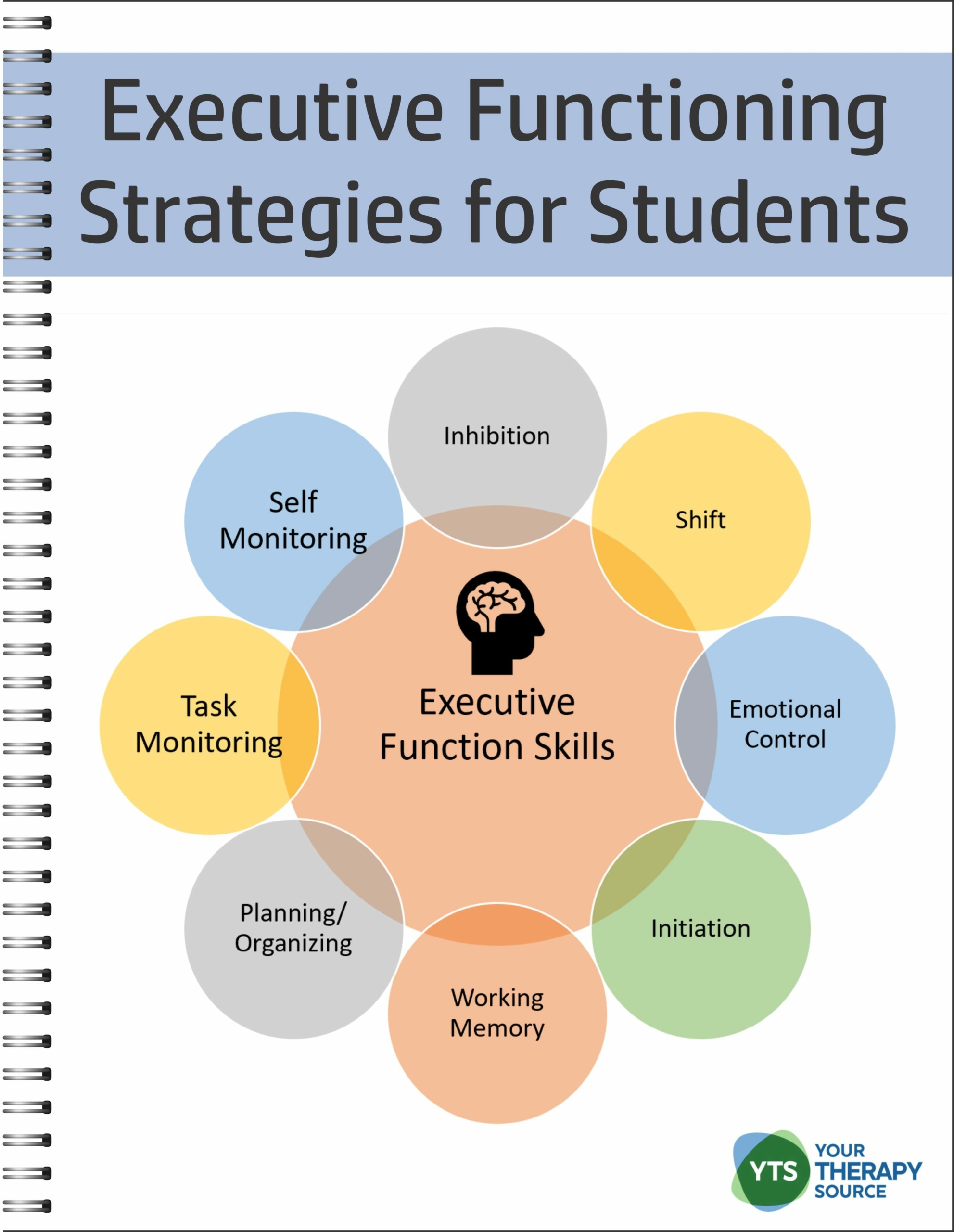
Executive Functioning Strategies for Students
COGNITIVE FLEXIBILITY SKILLS: IMPROVING EXECUTIVE FUNCTIONING
Cognitive flexibility is a critical component of executive functioning, a set of cognitive abilities responsible for managing attention, planning, organizing, and regulating behavior. Developing strong cognitive flexibility skills can help you become better at strategic planning, decision-making, and problem-solving.
NEW THINGS: THE BENEFITS OF CHALLENGING YOUR BRAIN
Trying new things, such as learning a new language or taking up a new hobby, can help improve cognitive flexibility. Engaging in unfamiliar activities forces the brain to form new connections and adapt to new challenges. This process can lead to increased cognitive abilities, including improved memory, attention, and creativity.
AUTISM SPECTRUM DISORDER: COGNITIVE FLEXIBILITY AND INDIVIDUAL DIFFERENCES
Cognitive flexibility is an essential skill that allows individuals to adapt and respond effectively to changing circumstances, rules, or perspectives. However, for those with autism spectrum disorder (ASD), cognitive flexibility can be particularly challenging, which may impact their ability to navigate daily life, social interactions, and learning environments.
CHALLENGES IN COGNITIVE FLEXIBILITY FOR INDIVIDUALS WITH ASD
Individuals with ASD often struggle with various aspects of cognitive flexibility, including:
- Shifting attention: Individuals with ASD may have difficulty redirecting their focus from one task or stimulus to another, which can impact their ability to multitask or adapt to changing demands.
- Changing routines: People with ASD often prefer predictable routines and may experience anxiety or distress when confronted with unexpected changes in their environment or daily activities.
- Understanding and adapting to social cues: Social situations often require flexibility in interpreting and responding to the thoughts, feelings, and intentions of others. Individuals with ASD may struggle to adapt their behavior based on the subtle cues and expectations present in social interactions.
- Problem-solving and perspective-taking: Cognitive flexibility is crucial for understanding different viewpoints and generating creative solutions to problems. Individuals with ASD may have difficulty considering alternative perspectives or approaches, which can impact their problem-solving abilities.
SUPPORTING COGNITIVE FLEXIBILITY IN INDIVIDUALS WITH ASD
Recognizing and accommodating individual differences in cognitive flexibility is crucial for supporting the success and well-being of individuals with ASD. Some strategies to foster cognitive flexibility in those with ASD include:
- Structured and explicit instruction: Providing clear, step-by-step instructions and modeling flexible thinking can help individuals with ASD understand and practice cognitive flexibility skills.
- Visual supports: Visual aids, such as social stories, visual schedules, or graphic organizers, can help individuals with ASD process and adapt to new information or changes in routine.
- Gradual exposure to change: Introducing small, manageable changes to routines or tasks can help individuals with ASD build tolerance for unpredictability and develop coping strategies to manage their anxiety.
- Social skills training: Participating in social skills training programs can help individuals with ASD practice perspective-taking, empathy, and flexible thinking in social situations.
- Collaboration with professionals: Working with occupational therapists, special education teachers, or other professionals knowledgeable about ASD can help identify and implement strategies to support cognitive flexibility development.
By understanding the unique challenges faced by individuals with ASD and providing targeted interventions and support, we can help them develop the cognitive flexibility skills necessary for navigating an ever-changing world.
DAILY LIFE: PRACTICING COGNITIVE FLEXIBILITY IN EVERYDAY SITUATIONS FOR STUDENTS
For students, incorporating cognitive flexibility practice into daily life can be particularly beneficial, as it can enhance their ability to adapt to new situations, think creatively, and consider different perspectives. Strengthening cognitive flexibility can also improve academic performance and social interactions. Here are some strategies for students to practice cognitive flexibility in everyday situations, focusing on different ideas, cognitive shifting, flexible thinking, and cognitive tasks.
7 Everday Ways to Practice Flexibility
- Explore different ideas: Encourage students to engage with diverse subjects and perspectives. They can join clubs or extracurricular activities that expose them to new ideas or participate in discussions that present varying viewpoints. This practice helps to expand their understanding and develop more flexible thinking.
- Embrace cognitive shifting: Students can practice cognitive shifting by intentionally switching between tasks or activities during study sessions. For example, they might alternate between working on math problems and reading a history chapter. This practice helps improve their ability to transition between different cognitive tasks efficiently.
- Become a flexible thinker: Students can challenge themselves to approach problems or situations from multiple angles. When faced with an academic challenge, they can brainstorm various solutions and evaluate the pros and cons of each approach. By considering alternative strategies, they’ll develop their ability to adapt and think creatively in different situations.
- Engage in cognitive tasks: Encourage students to participate in activities that require cognitive flexibility, such as puzzles, games, or learning a new skill. These activities help strengthen cognitive flexibility by demanding that they think in different ways, adapt to changing rules or conditions, and develop new problem-solving strategies.
- Practice active listening: Students can enhance their cognitive flexibility by practicing active listening in conversations and classroom discussions. This skill helps them to be more open-minded, consider different perspectives, and adapt their thinking based on new information.
- Set goals and adapt as needed: Students should establish personal or academic goals and be open to modifying their plans as circumstances change. Being willing to reassess their goals and adjust their strategies demonstrates cognitive flexibility and resilience in the face of change.
- Seek novel experiences: Encourage students to actively pursue new experiences, such as participating in school events, volunteering, or exploring new hobbies. These experiences can help them develop cognitive flexibility by exposing them to new situations and challenges that require adaptable thinking.
By integrating cognitive flexibility practice into their daily lives, students can develop this essential skill, which will benefit them academically, socially, and personally as they navigate the complexities of school and life.
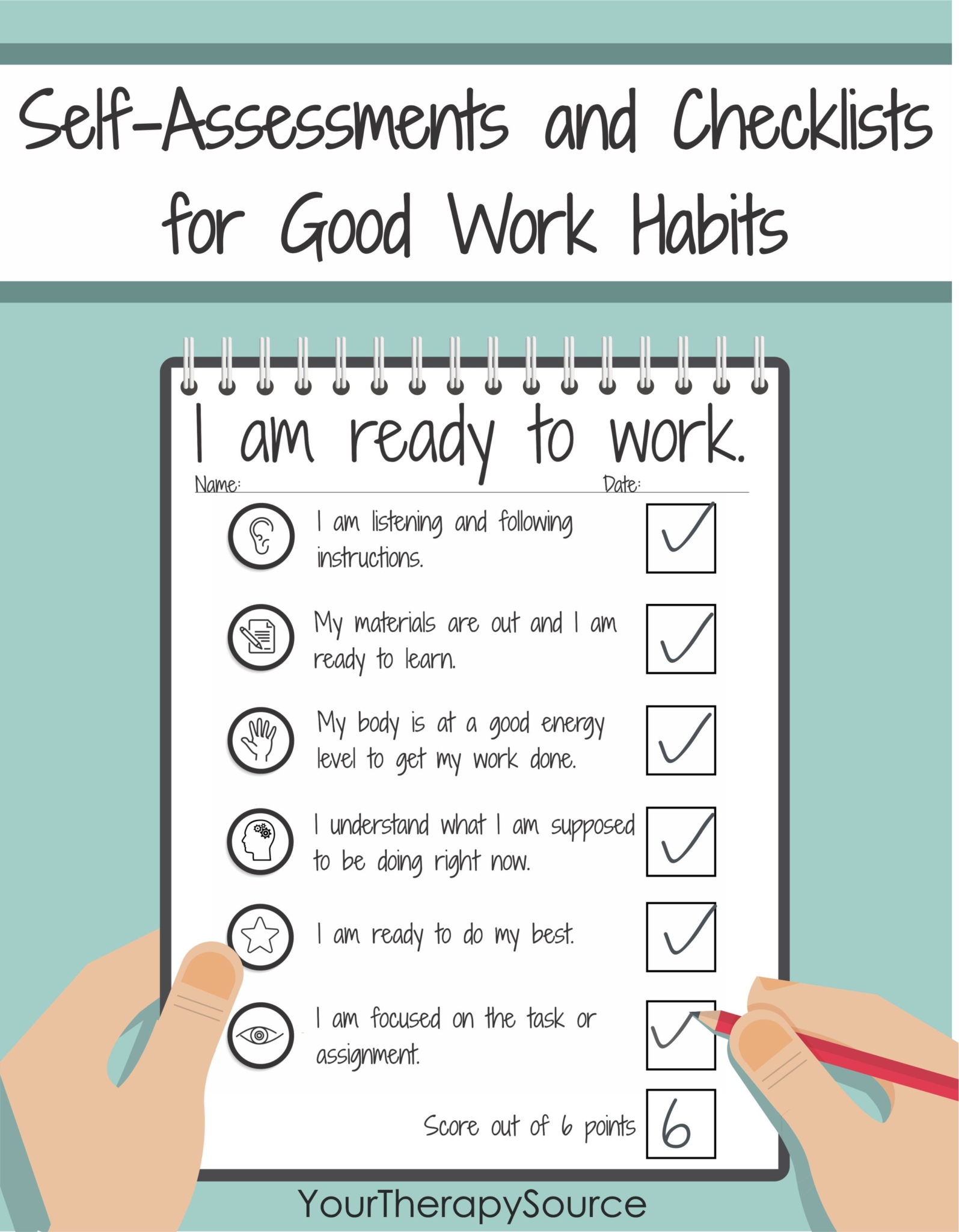
Self-Assessments and Checklists for Good Work Habits
10 TIPS FOR IMPROVING OVERALL COGNITIVE FLEXIBILITY
Here are 10 strategies for helping your students with cognitive flexibility throughout the day. You can find this as a handout as part of the Brain Training Posters DIGITAL VERSION.
- Play brain games: Engage in puzzles, riddles, or games that require you to think in different ways. These activities can help enhance your cognitive flexibility.
- Learn new things: Pursue a new hobby or study a new subject. This exposes your brain to different ways of thinking and promotes flexibility.
- Practice switching tasks: Work on one task for a while, then switch to another. This helps you improve your focus-shifting ability and adapt to different mental processes.
- Think of different solutions: When faced with a problem, brainstorm multiple ways to solve it. This encourages flexible and creative thinking.
- Ask “what if” questions: Imagine various scenarios and contemplate how you would handle them. This exercise helps you practice adaptability in different situations.
- Change your routine: Alter the order or timing of daily activities to help your brain adapt to change and become more flexible.
- Take breaks: Allow your brain to rest by taking short breaks between tasks. This helps maintain focus and openness to new ideas.
- Practice active listening: Pay close attention to others when they speak, and strive to understand their perspectives. This fosters open-mindedness and flexibility.
- Work with different people: Collaborate on group projects with new classmates or colleagues. This exposes you to different perspectives and encourages adaptability.
- Reflect on your experiences: Contemplate times when you had to be flexible and how you managed those situations. This reflection can help you learn from your experiences and become more adaptable in the future.
SUMMARY OF COGNITIVE FLEXIBILITY EXAMPLES
Cognitive flexibility is a vital skill for success in the 21st century, as it enables us to adapt to new challenges, think creatively, and navigate an increasingly complex world. By understanding cognitive flexibility examples for students and implementing strategies to help your students, they can train their brain to become more adaptable and open to new ideas, experiences, and perspectives.
